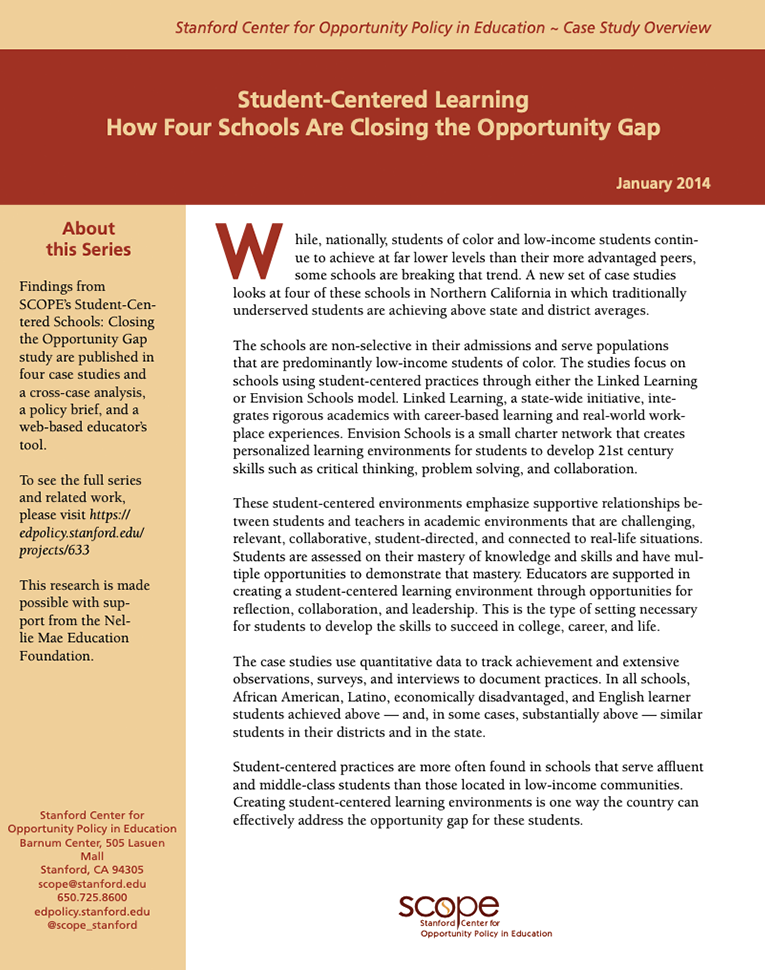Student-Centered Schools Study: Closing the Opportunity Gap
June 12, 2014
STANFORD CENTER FOR OPPORTUNITY POLICY IN EDUCATION (SCOPE)
New research from the Stanford Center for Opportunity Policy in Education (SCOPE) finds that creating student-centered learning environments is one of the most promising ways to address the opportunity gap.
These student-centered environments emphasize supportive relationships between students and teachers in academic environments that are challenging, relevant, collaborative, student-directed, and connected to real-life situations. In all of California, schools studied as part of this project, African-American, Latino, economically disadvantaged, and English language learner students achieved above—and in some cases, substantially above—similar students in their districts and state.
This research consists of numerous reports and tools, including four case studies, a cross-case analysis of the research, a research brief, policy brief, and a practitioner tool—all of which can be downloaded from the SCOPE website.
Despite the many forces limiting learning opportunities for low-income students and students of color over the last decade, some schools have managed to create a context within which a rich, engaging curriculum is offered to all students in a manner that personalizes education and supports students’ individual needs.

